If you’re a technology leader, you know there’s no shortage these days of innovation events and programs available to you. CXOs attend events for a number of reasons, whether for career advancement, peer networking, or simply to learn about emerging trends in the industry. Unfortunately, there are few truly great options out there that provide a high value return on investment, and are actually worth your time.
“CIOs must be vigilant with their time,” says Gary Beach, publisher emeritus for CIO Magazine. “Smart technology leaders continually assess the value one derived from various time and resource investments, and how that value may play a role in successful execution of transformation efforts.”
Personally, I see four main constituencies playing a role around corporate technology leaders and the innovation events they can attend: technology OEMs, channel partners (e.g. value-added resellers (VARs), managed solution providers (MSPs), integrators, and consultants), venture capital firms, and for-profit, sponsor-based CXO event production companies. Let’s take a closer look, ask the tough questions, and provide some answers which let you make more informed decisions about how to spend your time, money, and resources.
Technology OEMs
Manufacturers of tech products are limited in the insights into industry trends and transformation they can provide because, at the end of the day, they are beholden to the products and services they sell. Selling these products is what drives the decision-making around hosting CXOs for any type of social networking event, EBC, or other program. To be clear: this bias towards their own products isn’t a bad thing – but it’s something a CIO should keep in mind when determining where to spend their time.
Ask yourself a few questions before going to an innovation event hosted by an OEM: What do they want from me? What do they hope to gain from my attendance? What insight can they offer me? By asking these questions, you can set your own expectations properly. There is definitely value in these events, but does it match the time and effort you put into it? The main benefit of these events is typically road-mapping future tech, maintaining confidence in your past investments, or losing that confidence and being able to make more-informed decisions regarding introducing a competitor’s solutions.
VARs, MSPs, SIs and Consulting firms
Channel partners have a broad view of the industry, operating between OEMs and their customers. This puts them in a unique position to provide insight specifically for their customers’ needs. However, for every channel company providing significant value in their events, you will find there are a hundred who will make you wish you had that time back in your life. These companies have a wide spectrum of events: training programs, innovation days, tech summits, annual conferences and dinners. But it’s exactly that extensive range that makes it difficult to find the needle in the haystack.
When considering the time and money you’ll spend here, CIOs must ask themselves: What can I expect to gain from attending? Who is developing the content and to what end? Is my voice included in the agenda? What motivates the organizers and how will that affect the experience I will receive? Generally speaking, you may find that many events in this category are a poor investment of a CXO’s time. Instead, they are more valuable for mid and entry-level IT leaders.
Venture Capital Firms
Not all VCs are created equal. Some deliver significantly more value than their average peers. There are typically two types of VC events CXOs can participate in: portfolio days and tech summits. The former is essentially a VC-hosted speed-dating event, in which corporate clients are pitched on the products and services of the companies the VC has invested in. The latter is a larger-scale annual version of a portfolio day, hosted at a nice venue with nice amenities and a big-brand speaker or two. Dozens of CXOs from various organizations attend, so there is some value in peer networking. The challenge is that the content and thought-leadership is chosen for you, not by you, with few exceptions (There are 2, maybe 3 firms in the valley who go above and beyond in providing value through their tech summits).
CXOs would be wise here to ponder the tremendous value they bring to these interactions, because it may be greater here than in any of the other examples. The questions to ask here are: How valuable is my input and feedback? How does my knowledge-transfer allow them to be more successful, and what is that worth? Is this a fair exchange of value?
On average, the CXO in this scenario has become the product. The value is lopsided in favor of the VCs and startups because the CXOs bring so much more value to the table. In particular, they offer product/market fit feedback and insightful data that can inform investment decisions. There are a select few VCs who are genuinely interested in helping CXOs, putting their needs first, and who want to have a mutually beneficial exchange. However these VCs understand that, being one firm with one portfolio of companies to choose from, they are limited in the solutions they can bring to the table to advance a business initiative.
For example, the folks at Menlo Ventures take a longer term approach to their CXO relationships and understand how to curate and run first-class events that provide meaningful value for all. “We first seek to understand the business needs and priorities of CXOs, then work to deliver relevant content, thought-leadership, and companies to present, even if outside the Menlo Ventures portfolio. The relationship only works if the CXO’s would look forward to doing it again ” says Matt Murphy, General Partner, Menlo Ventures
For-profit, sponsor-based event production companies
We’ve all been there. For a CIO, these events are typically free or nearly free, but they do take up a good chunk of your time. They’re held at a high-end venue with great food, drinks, and an agenda designed for maximum marketing impact for prominent VCs, a select few emerging tech startups, and high-profile CXOs. On the surface, it seems like a good idea. But when you pull back the curtain on the operational model of these event production companies, the story looks entirely different. All the answers you need are in response to three simple questions: Who pays? How is the agenda created? Who will benefit from attending?
In a recent conversation with Ralph Loura, former CTO of Rodan + Fields, it became quite clear how the industry is shifting: “There is solid value in the peer networking aspect of sponsor-based events, but nothing you can’t get from some other CxO networking groups as well. Beyond that, CxOs who really want to maximize the value return for their time are increasingly prioritizing closed groups or consulting arrangements that typically involve an annual a membership, fee or subscription, or engagement fee. The non-sponsored nature of these groups mean they can be designed and built around the needs of the CxO members allowing for a greater focus on return on invested time of the participants.”
The model is simple: reach a point in the business where you can reliably confirm a certain number of CXO attendees, and sell that attendee list to sponsors for access. Those sponsors typically come in the form of tech companies wanting to sell their products to CIOs, and VCs wanting to grow the companies they’ve invested in. While many CXOs are becoming more aware of the operational model of these events, causing a slow but steady decline in attendance numbers in past years, many still show up only for the peer networking. If you’re not the big brand CIO who is being paid directly to attend, speak, and draw attendees, this kind of event may not be right for you.
Final Analysis and Recommendation
This is one of the best times ever to be a CIO. However, if you accept the premise that demands on a CIO’s time are greater now than ever, you must also believe that a CIO’s ability to succeed in today’s rapidly evolving business climate depends on making wise choices regarding where to spend their time.
- Tech OEM events are necessary if the relationship is strategic to your business and the event can be customized to your needs. However, you shouldn’t invest in these more than once every couple of years.
- While channel partners are often viewed by many CIOs as wolves in sheep’s clothing, there are a select few that can add value to your senior and mid-level leaders. Delegate participation to them if you are confident the partners you’ve chosen are putting your needs first.
- Maintain relationships with 2 or 3 VCs who are committed to helping you advance your business initiatives, and don’t let the value exchange become one-sided. Tap into the thought leadership you need, get portfolio updates every couple of years, and remember the innovation exposure you’ll get from any single firm is extremely limited.
- Finally, attend sponsor-based events if you have nowhere else to turn for peer networking.
Time is money. Before investing any of your precious time to attend a future event, ask this question: “If I attend, will I be the customer or the product?” The best way to achieve maximum value in exchange for minimal time and effort is by connecting to offerings which are purpose-built to serve you. The answers to the magic questions there should be easy: I am paying for this. The people helping me are focused on creating value for me, and me only. Nobody can pay for access to me. I am still the customer.
If you have questions or are interested in more specific recommendations I can be reached at chad@syndicategroup.com



